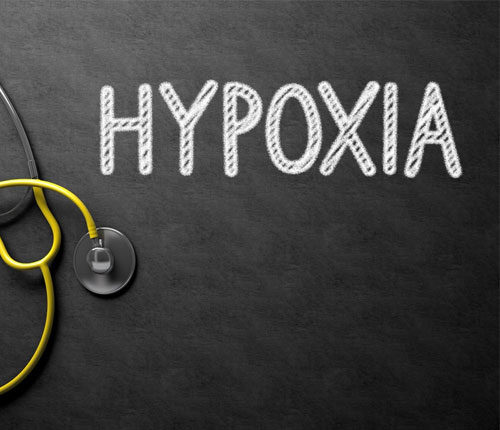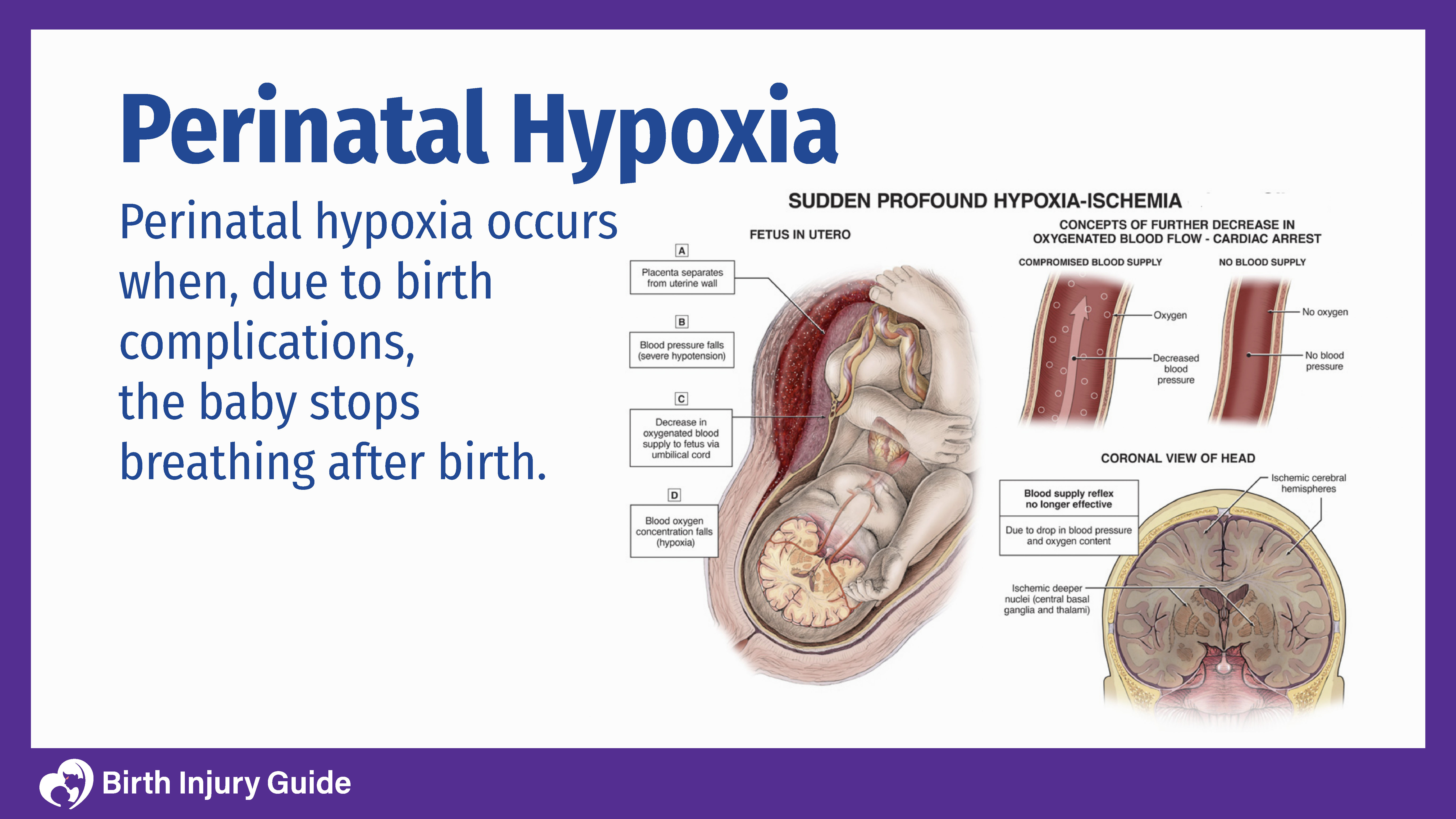
Perinatal Hypoxia
Hypoxia is a condition that occurs when oxygen can’t get to bodily tissues. Perinatal means immediately before and after birth. While the direct translation of perinatal hypoxia means a deficiency of oxygen to tissue before and after birth, there’s a little more to it than that.

Depriving the brain of essential oxygen causes oxygen-related brain damage which kills some brain cells and could lead to cerebral palsy.
Causes of Perinatal Hypoxia
Perinatal Hypoxia is oxygen deficiency in the infant. There can be a number of reasons that the child does not get the required amount of oxygen. The most common reasons that infants experience hypoxia include:
- Maternal smoking
- Traumatic brain injuries
- Maternal anemia
- Birth asphyxia
- Inadequate fetal monitoring
Perinatal Hypoxia can also happen when there is a problem with the umbilical cord (such as an umbilical cord collapse or prolapse) or placental abruption. All of these conditions should be diagnosed by the doctor during pregnancy as they could lead to birth complications, an emergency Cesarean section (C-section) and more.
How Does Perinatal Hypoxia Affect Children?
Perinatal hypoxia can lead to a number of serious medical conditions, such as Hypoxic Ischemic Encephalopathy (HIE) and brain injuries related to birth asphyxia. All of these injuries are serious brain injuries that may lead to paralysis and other severe conditions.
Generally, these injuries develop within 48 hours, so if the baby receives treatment immediately, several of the severe after-effects can be substantially diminished. An HIE baby is particularly at risk for complications due to the loss of oxygen and blood supply.
However, according to the U.S. National Institutes of Health (NIH), perinatal hypoxia and asphyxia account for close to one-third of neonatal deaths. Other medical conditions associated with these conditions include:
- Cerebral palsy
- Severe seizures
- Cognitive disabilities
- Behavioral disorders
Treatment for Perinatal Hypoxia
Hypothermia is a medical term that essentially means freezing to death, but therapeutic neonatal hypothermia is a form of treatment that is effective at treating perinatal hypoxia. When the hypothermic treatment, or cooling therapy, is commenced within six hours of the baby’s birth, results indicate that the rate of mortality and long-term neurological disorders is cut in half. Hypothermia decreases inflammation, cellular processes and swelling of the brain.
Controlled, clinical neonatal therapeutic hypothermia works because during birth, the body switches into emergency mode, sometimes starting a chain of events that lead to seizures, which in turn leads to brain damage. When you cool the baby with ice blankets or a special ice cap, the cellular responses slow down which allows more time for the doctors to concentrate more oxygen on the infant. The oxygen level, then, restores to a natural level.
Hypothermia treatment is generally used after stabilizing the infant shortly after birth, according to the WHO Reproductive Health Library. This is especially helpful for infants with severe hypoxic ischemic encephalopathy.



